PhotoBlog - 影音
本文作者:Kent發佈日期:2011-12-07 02:21:22
在Facebook 專頁按「讚好」,免費影音資訊自動送上
電腦數碼音樂重播專欄 (8) - 時鐘為何那麼重要?
時鐘為何那麼重要? 時鐘不準確對音色的影響在那裡?
常常聽到發燒友談到數碼音響也會提到數碼時鐘, 也開始見到民用音響生產商推出這類型獨立產品。我試試探討這方面的技術及看法。

首先談及一些基本背景資料。數碼音樂就是由 "1" 和 "0" 組合成的方浪資料, 所以數碼資料能夠 100% 複製。數碼資料由一個地方正確地傳送至另外一個地方是沒有損失的。好像現在筆者拾筆之時, 也從德國把趙學而小姐 "Trinity" 大碟 Pure Audio Blu-ray 母盤經過互聯網傳送回香港。中間互聯網速度有快有慢, 但是對資料是絕對沒有任何影響的。
數碼傳送制式 (例如 AES/EBU, SPDIF, Toslink) 是 ”即時” 傳輸方法, CD 重播 (44.1kHz) 每一秒需要把 88,200 個取樣 (左右聲道各 44,100) 由 CD 轉盤或電腦送到解碼,需要有一個準確時間速度。時鐘由此而生。

一套數碼音響, 永遠只有一個主時鐘 (Master Reference Sync)。如果是正常簡單的 CD 轉盤/解碼組合, 主時鐘 (Master Ref. Sync) 便是 CD 轉盤。AES/EBU 和 SPDIF 把數碼資料跟主時鐘資料由轉盤輸送至解碼器。解碼器會鎖上輸入的主時鐘資料 (例如是 44.1, 96, 192kHz), 再對比解碼內的時鐘資料, 而把數碼資料重新排列好送至解碼部份。解碼器跟主時鐘對比重新排列功能越強, 效果越好。
主時鐘準確度對解碼甚麼時間把 ”1” 和 ”0” 重組成高低電流有直接影響。主時鐘 (或者只是解碼在時鐘對比重組) 不準確, 產生的 Jitter 會使解碼模擬輸出的電流出現非線性錯誤。
時鐘是由 Oscillator 是放在機內的一個小型的金屬盒。這晶體越近解碼部份越有利。Wadia, dCS 便推出過由解碼用作主時鐘頭的 ClockSync / ClockLink 方法使用另一條 BNC 線把時鐘資料送回轉盤。 CAS 裡面的 Aync USB / Firewire 設計都是一樣。

由以上資料看, 大家可以明白時鐘準確度在解碼內裡最重要。
那為甚麽有外置時鐘的出現?
上文提及一套數碼音響組合只有一個主時鐘。例如當你使用 4 部獨立雙聲道解碼作 8 聲道輸出, 4 部解碼要同時得到準確時鐘訊號, 主時鐘的作用便因而出現。在錄音室內多達 10-20 部數碼器材。有時候還有混合不同的取樣率 (pull up / pull down / video sync), 一套優秀的主時鐘便發揮很大用途。筆者的母帶製作室也擁有 Grimm 主時鐘, 有名的如 Antelope Trinity 有不少擁戴者。外國有不少錄音室也應用 Weiss AFI1, 作為音頻界面連主時鐘混合產品。

原子鐘是屬於高階產品, 利用原子 (Caesium-133, Rubidium-87) Atomic 技術達到非常高的準確度以及穩定性 (1000 年才會轉移 1 秒)。我記得到最早出現於音響市場的 Atomic Audio Master Clock 大約是 1996 年, 當年 dCS 日本代理 TimeLord 加入了 10MHz 的 Chronos 原子鐘去控制 dCS992。原子物料的確提供非常超群的規格, 可是原子物料輸出的 10MHz 並非數碼音響器材取樣率的倍數, 要加入一些 ”額外” 線路把 10MHz 拉至適合的頻率才行。這代表了原子鐘的準確性並非完全只是由原子物料來決定, 調整線路的準確度及電源穩定更加重要。如果有興趣這樣的原子鐘, 我推介今年才推出的 Stanford PERF10。
當使用主時鐘時, 75Ohm BNC 接線內的阻抗極為重要。為了得到最佳效果, 在被鎖定的機器上應該使用一個 BNC T- Bridge 加入一個 75Ohm 的 Terminator。我在日本 Dynamic Audio 5555 了解很多日本 dCS 主時鐘用戶也使用法國 Viard Audio Design 的貴價 BNC 時鐘線。

作為一篇出現於民用音響雜誌的文章, 我非常尊重發燒友從聆聽得到的經驗。我認為把音響作為興趣, 歡喜便可以。作為專業錄音室工作者, 也擁有我認為市場上最佳的主時鐘, 不得不承認音響學以証實了主時鐘並不能把好質素的解碼及編碼的技術提升。
有興趣的朋友, 上年英國 Sound on Sound 有一篇好的文章: http://www.soundonsound.com/sos/jun10/articles/ masterclocks.htm
Jitter Mythology Quotation:
"It is a common myth that using a super-low jitter external master clock will improve the performance of your ADC/DAC. A well-engineered converter will perform as well with an external clock as with its low jitter internal clock. If it performs any differently at all when the clock source is changed, the converter is not behaving well, and contrary to what most people believe, will almost certainly measure worse with the external clock (you will see/measure introduced intermodulation distortion products as the PLL fails to reject the incoming jitter)."
Simon Woollard, Sales & Applications Engineer, Prism Sound.
Last modified: 2011-12-07 13:44:50
發表您對 < 電腦數碼音樂重播專欄 (8) - 時鐘為何那麼重要? > 的意見
最新資訊 - 市場
P&O Hi-Fi Company Limited
2025-11-02
最新資訊 - 市場
天下影音即日起結業清貨
2025-11-02
最新資訊 - 影音
搭載次世代音訊引擎、SFP 與線性電源,TEAC 推出全新網路轉盤機 NT-507T
2025-10-30
最新資訊 - 影音
ATH-M50x 發售 10 週年紀念,鐵三角推出限定款「ATH-M50x ENSO」
2025-10-29
最新資訊 - 影音
由紀精密推出全新不鏽鋼唱片鎮「CENTER STABILIZER」
2025-10-28
最新資訊 - 影音
JBL 推出全新派對型喇叭系統 「PartyBox On-The-Go 2」
2025-10-28
最新資訊 - 影音
「真正開放式」設計,Audio-Technica 推出旗艦耳機 ATH-ADX7000
2025-10-27
最新資訊 - 影音
Furutech 推出經典電源線全新版本「The Empire Plus」與「The Astoria Plus」
2025-10-24
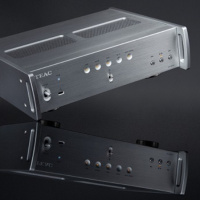
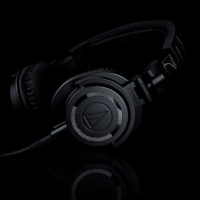
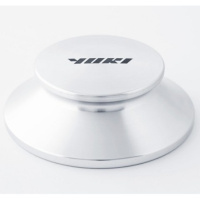
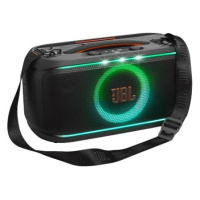
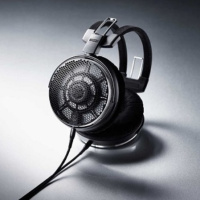
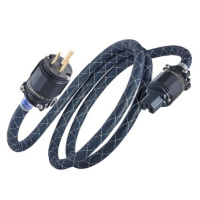


19 Comments
thanks
Two articles from Grimm worth reading, one on atomic clock; the other on jitter. Funny though, even he has launched his CC1 clock, he still think that an external clock may not always give better sound. What an honest man!!
http://www.grimmaudio.com/whitepapers/PLL%20and%20clock%20basics.pdf
http://www.grimmaudio.com/whitepapers/Picoseconds%20or%20ppm.pdf
unlike wadia and esoteric, other high end audio manufacturers like accuphase , jason weiss medea + combo not using world clock in their best transport dac products
any reason behind??
If a Dac is good, then it's clock must be good also, so no need for external clock.
External clock is more useful when doing recording and mixing where a number of digital sources are involved.
For music playback where only one digital source is involved, a good dac is more than enough!!Remember data transmission does not need a clock!!
Grimm Audio is an audio elite group. The 4 founders are very famous engineers and journalist in audio industry.
I have the highest respect of what they said and what they create.
jitter appears not just on digital music, but also on other digital source like video. Grimm also has VCC for conversion of video, use along with CC1.
VCC works for video clock and locks to PAL and NTSC blackburst. This is different standard use in video production.
Oh, Simon Woollard was my classmate.
> Simon Woollard was my classmate.
Yeah, a small world.
would you recommend Weiss the next weiss medea +++ to have a world clock input???
Hello Batman hing,
First time I did that was 1999 before the first Medea launched.
At that period of time, using WLK Slave will makes Medea sounds worse, therefore Weiss abandoned the idea.
In last decade, the industry has improved technology to have WLK Slave without worse performances, but by NO means "better".
Unfortunately, these so called industry experts still have no idea that long term clock accuracy has nothing to do with jitter (short term accuracy).
An atomic clock buys you long term accuracy. But in audio, we need short term timing accuracy - the correct timing on the rising edge of the biphase S/PDIF signal. Atomic clock with its low ppm design is not the ideal clock for audio. To make matter worse, the use of an external clock divider to divide down a 10MHz clock signal to one that is suitable for audio will increase the jitter further on the clock signal.
A proper clock design would use a high Q x'tal with a clock circuit that does not degrade the Q value of the x'tal. That means internal clock, not external clock. An atomic clock cannot achieve phase noise of -140dbC/Hz at 100Hz, where a high Q x'tal internal clock design can. A good internal clock is not only way cheaper, but also way better than an external clock. The trick is how to find this high Q x'tal and how to design this clock circuit.
The external clock is only useful for sycn'ing multiple digital devices/sources. It is not really useful for playback or even ADC, unless the internal clock in your playback device or ADC is crap.
And finally, Async USB / Firewire does not work the same as sending back the clock line from the DAC to the transport. These asyn devices buffer the audio data and reclock the audio data using its own internal clock.
Using clock in studio, understandable! Using clock in home, because the manufacturer using 5 cents std xtal in their machine, opening another door for extra clock unit sale, not because atomic clock is good, just the clock in CDP/DAC just too bad in comparison for "room for improvement", industry expert still a businessman, they know it but just don't want to let you know, honest don't gain them a bowl of rice!!
Very enlightening comments.
But there are loads of +ve comments re master clocks.... 20~30% better...spatial ... musical... etc
Could it be just mix-n-match improvement?
As Hercules was saying, the internal clock was too poor so you get this 20-30% improvement.
A really low phase noise internal clock has 100-200% improvement.
oic. Thx for explanation. I'll keep my$$$ for other toys.
I'm working on cas. Any good suggestion on digital interface (DDC) in the same time I can use Stanford PERF10. But the DDC output must be AES
If CAS output to DAC using async USB interface, external clock only use as replacement of the internal clock if the internal clock quality is not good enough. See many ching's post in this thread.
Hi jf09, then you will need a DD which inputs 10MHz. I think only antelope is going this direction.